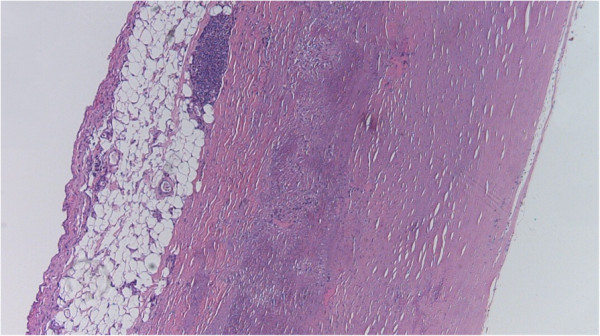Playlist
Show Playlist
Hide Playlist
Atherosclerosis: Therapy
-
Slides 01 VascularMedicine advanced.pdf
-
Reference List Vascular Medicine.pdf
-
Download Lecture Overview
00:01 Let's talk a little bit about therapy. Well, therapy: What's the goal? The goal is • To relieve the pain of intermittent claudication • To improve exercise tolerance by increasing the distance that people can walk before they get claudication • And, of course, preventing critical artery occlusion that can lead to ulcers; to gangrene, which is necrosis (death of tissue); and eventually even amputation of the… part of the leg or even above the knee if the disease is very, very severe. So there are a number of treatments. First of all, our lifestyle measures: All of these attempt to reverse the atherosclerotic process. 00:45 • Smoking cessation • Lipid-lowering therapy: There's a number of excellent drugs—the statin drugs being the best ones—that induce stabilization of atherosclerotic plaques. And if you get the cholesterol low enough, you may actually pull some of the cholesterol out of the atherosclerotic plaque. 01:01 • Control of diabetes and hypertension All of these improve the situation for peripheral vascular disease. Regular supervised exercise is very important. Again, we mentioned already one medication: the cholesterol-lowering medication (the statins). But there are also mild blood thinners that prevent blood clots from forming in these arteries. If the narrowing is so severe and the symptoms are so severe, angioplasty with the balloon and stents or surgery can open up the artery and make the patient feel much better with resolution of those symptoms. 01:39 Hopefully, what we do is we are able to do this before we get to angioplasty and surgery: rather, the lifestyle changes and the medicines, hopefully, stabilize the situation so angioplasty and surgery are not necessary. Walking and exercise is a very important part of this therapy. It's been 40 years since people first noted that regular walking, usually almost every day, 30 minutes (at least three times a week, but preferably almost every day) can markedly improve symptoms by encouraging the formation of new collateral blood vessels and particularly by improving muscle efficiency so the muscles don't require as much blood flow. Many patients experience a dramatic increase in the distance they're able to walk without pain when they follow a regular walking exercise program. And there are also vascular rehabilitation programs (just like there are cardiac rehabilitation programs) that emphasize lifestyle change, taking your medication, and certainly exercise. 02:45 How can you prevent getting to this point? Of course, it's the same thing: It's lifestyle changes and control of all the things that lead to atherosclerosis. So: • Not smoking • Control of blood pressure • Regular physical activity • Weight control • Diabetes control And in the medication areas: • Antiplatelet or anticoagulant agents: thinning of the blood to prevent the blood clot • ACE inhibitors: one of the very best forms of blood pressure control (we'll talk more about them in later lectures on hypertension) • Beta blockers also are very helpful, particularly where heart function is decreased. 03:25 • Lipid management: as I mentioned, the statin drugs to get the cholesterol down • And avoidance of hormone replacement therapy, since that can exacerbate the atherosclerotic process in women So these are the whole spectrum of prevention guidelines, and we'll be talking about more of these individually for different conditions as we go along.
About the Lecture
The lecture Atherosclerosis: Therapy by Joseph Alpert, MD is from the course Arterial Diseases.
Included Quiz Questions
The first line of therapy for all patients with atherosclerosis is which of the following:
- Lifestyle changes/walking.
- Lipid lowering drugs.
- Anticoagulants.
- Beta-blockers.
- ACE inhibitors.
Which of the following is not therapeutic in arterial diseases?
- Antihistamines.
- Lipid lowering drugs.
- Aspirin.
- ACE inhibitors.
- Beta-blockers.
Which of the following is diagnostic aid in arterial diseases?
- Ultrasound.
- Chest X-ray.
- Computer tomography.
- Auscultation.
- Electrocardiogram.
Customer reviews
5,0 of 5 stars
| 5 Stars |
|
1 |
| 4 Stars |
|
0 |
| 3 Stars |
|
0 |
| 2 Stars |
|
0 |
| 1 Star |
|
0 |
Easy to understand and short concise essential information for students





